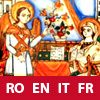Icons on glass
Painting on glass – a very ancient art introduced to Transylvania after its annexation to the Habsburg empire (1699) – had an extraordinary diffusion as a mass phenomenon as the result of a miraculous event that happened at Nicula, a village in the north of Transylvania, where on the 15th February, 1694 (some scholars say 1699) tears were seen running down the face of the Blessed Virgin on a wooden icon of the Madonna with Child in the local church. This miraculous event transformed the village into a centre of pilgrimage, the many pilgrims being anxious to obtain an image of the miraculous Madonna to take home. In this way began the great spread of the painting of icons on glass in Transylvania.
The classical icon and its theological and spiritual meaning
The icon (its name comes from the Greek word, eikon, or image) is essentially connected with the liturgy and with prayer, and it opens the believer to the adoration of God in tangible form. Contemplating the image, the believer stands in the presence of and prays to the one it represents. The centre of Orthodox iconography is always the figure of Jesus Christ, most often the Nativity, the Baptism of Our Lord, the Last Supper, the Crucifixion and the Resurrection. The most frequently painted image, however, is that of the Virgin Mary, especially the Madonna with Child and the Mother of Sorrows; then come icons of the Annunciation, of the Coronation of Our Lady and lastly, the Dormition. Also very numerous are icons of the saints, every one of whom was invoked with regard to a specific need. Thus, for example, St Elijah the Prophet was invoked when rain was needed in periods of drought or to protect the harvest during thunder-storms, while St Haralambie was invoked against the plague. There are many icons of St George and St Nicholas. Every season had it own protector, as had the various trades and crafts.
The technique of painting on glass
The actual painting of the icons followed a procedure which is most accurately rendered by the German word Hinterglasmalerei, i.e. the icon is painted under the glass rather than on it. In fact, the icon is painted on what in the finished work will be the reverse of the glass panel (usually hand-made by local artisans), while the side that will be exposed to the eye of the viewer acts as a protective layer for the painting. This procedure requires that the design be applied in reverse so that when viewed from the other side it will appear in its correct contours. In a first phase the main outlines of the icon were drawn with a soft brush. The next stage was the colouring of the figures and the background; in particular cases and in some regions, use was made of small films of gold or silver colour which created special effects of light and gradation of colour. When finished, the painting was given a coating of varnish to protect it from humidity and then it was framed, a panel, usually of spruce, being added behind for additional protection.
Peasants painting for peasants
The painters on glass in Transylvania were not full-time artists, though subsequently some did become so. The only exceptions to this were those artists who were already engaged in painting on wood or in painting frescoes in churches. Peasants from time immemorial, once work in the fields was over or when the weather made such work impossible, these small artisans dedicated themselves in their homes to the painting of icons on glass. The painter obtained his colours exclusively from natural materials. White, for example, was made from lime, yellow from yellow mud, red from salts of lead oxide and cuprite, blue from cobalt salts. In every case the painting of icons was never a purely secular, materialistic, activity: the painters had to prepare themselves spiritually by prayer and fasting and often special liturgical rites we provided for this purpose.
With the increase in demand came an increase in the range on offer: the painters from the Nicula region were joined later by anonymous artists from other localities, thus giving rise to other centres of production, all well represented by the masterpieces held in the museum at Sibiel.
TOP
|
 |
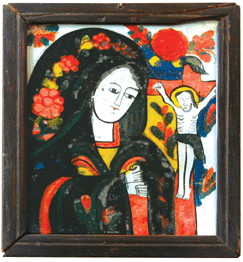 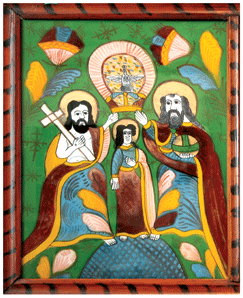 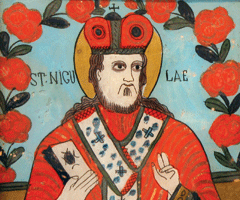 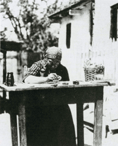 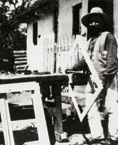
|
